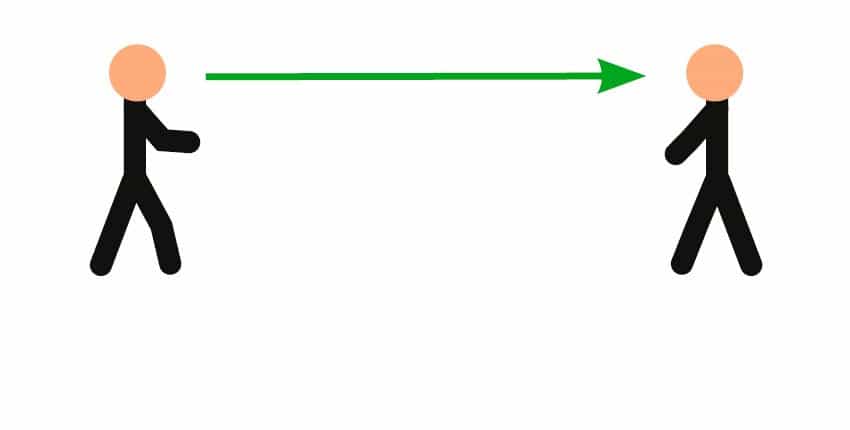
Direct sound transmits the fundamental tone of the voice and low-frequency vowels well into the room, but not higher-frequency, toneless consonants (f, h, s, th), which are important for speech.
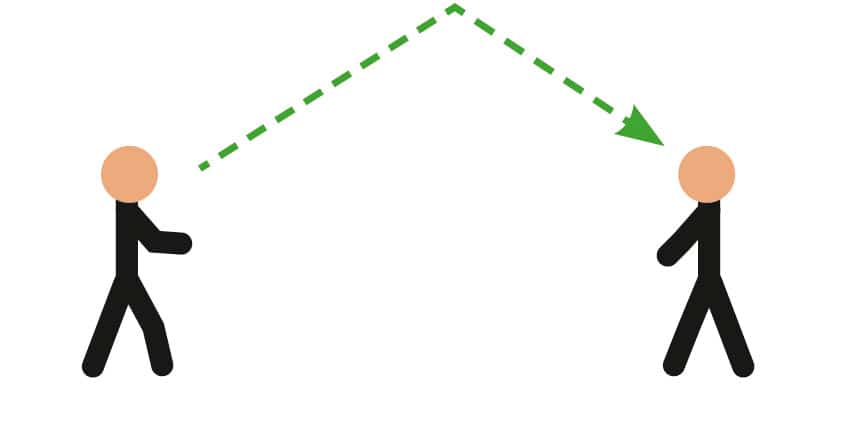
The so-called short reflection from the ceiling provides the necessary amplification of the high and medium frequencies (consonants). It arrives at the listening position within 3 – 10 milliseconds after the direct sound wave. Since our hearing cannot perceive this minimal delay, direct sound and reflection add up, significantly increasing the speech intelligibility that is necessary in the classroom.
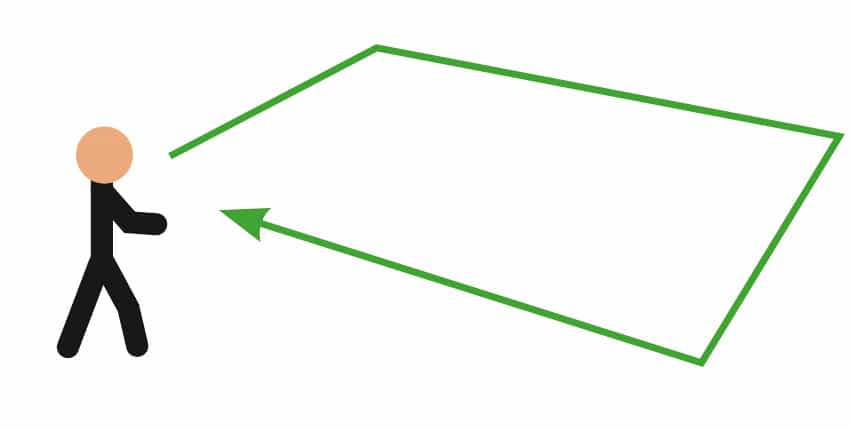
Reverberation is the sum of multiple reflected sound waves and is perceived as an independent sound event due to the longer time delay. Pure reverberation does not necessarily impair speech intelligibility. Large concert halls and churches have a distinct reverberation and can enhance the listening experience.
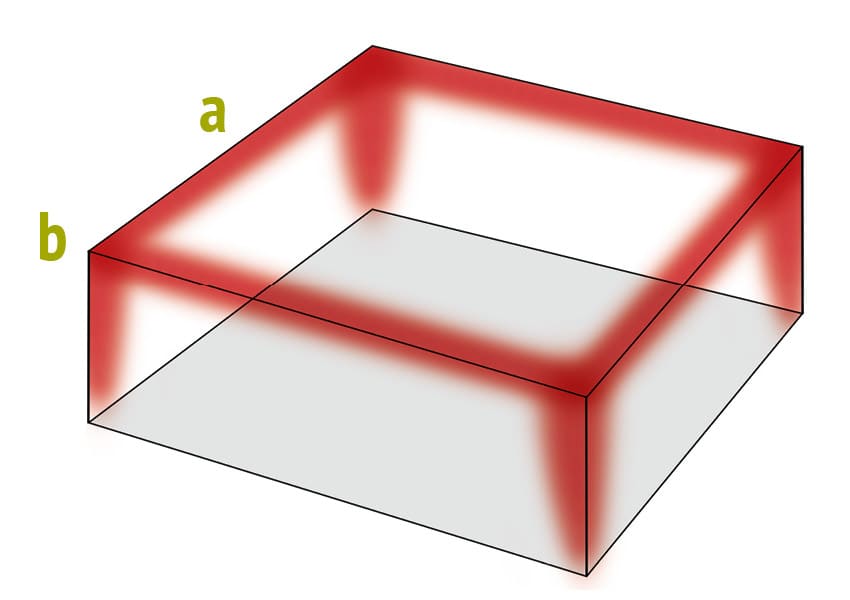
The flutter echo is the periodic sequencing of an echo: the sound is reflected back to its source by two or more highly reflective surfaces. These can be parallel surfaces (opposite walls) or, in particular, the boundaries and corners of a room. This creates an interfering backdrop that particularly impairs speech intelligibility – and is often perceived as unpleasant or even painful. The noise level builds up. The listeners tune out, the lecturers are stressed.
In a rectangular room, two-dimensional flutter echoes build up in the upper boundaries (a) and three-dimensional ones in the upper corners (b). In the lower boundaries and corners, furniture and people usually prevent this effect.
The Solution to the Problem...
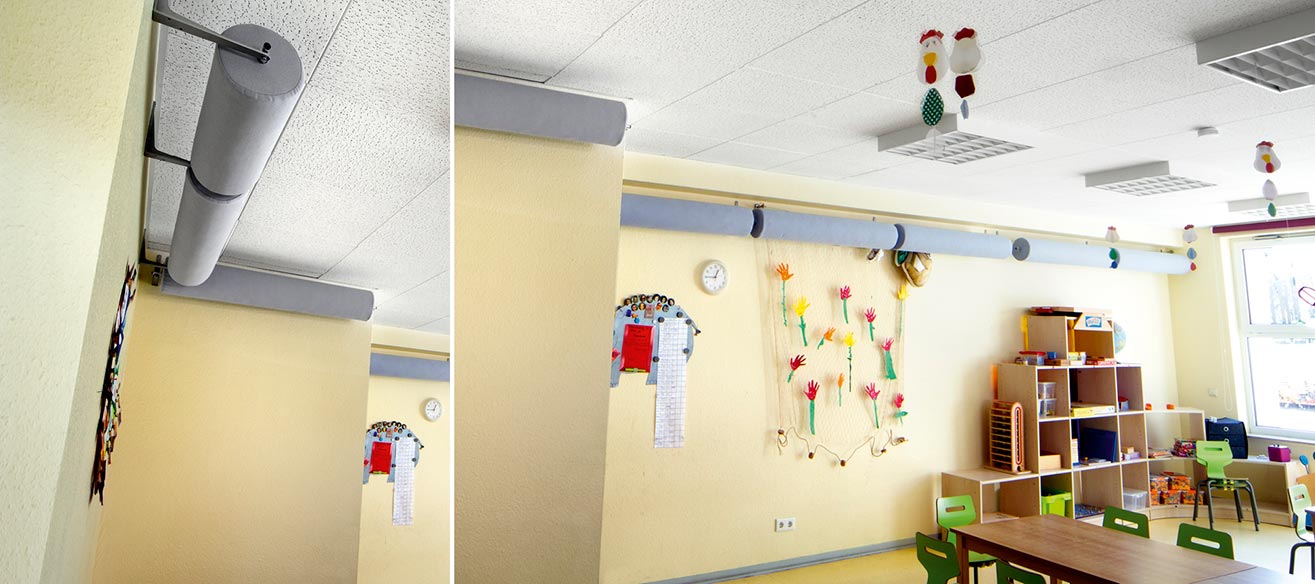
Front-of-class Teaching and Distances
Time and again one hears the claim that front-of-class teaching no longer takes place which means that the ceilings can be fully dampened. This is wrong. Firstly, frontal lecturing still takes place, e.g. when learners practice giving presentations. Secondly, even during a discussion, each person in the room must understand the contributions of the other students, and the maximum diagonal distance in the room is 8-10 meters. Therefore, full-surface damping of the ceiling in classrooms should be avoided at all costs.
The negative effect of such incorrect damping is explained below.
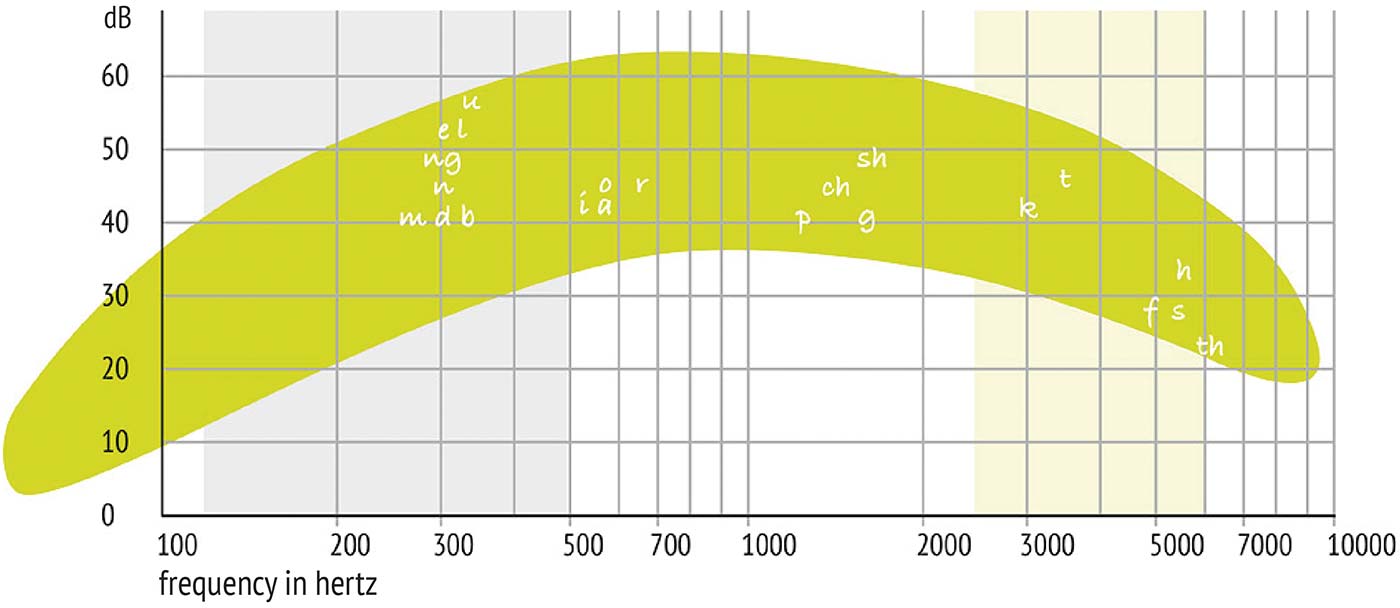
The so-called „speech banana“ shows the frequency range in which speech takes place. You can see that the soundless consonants f, s, h, and th only range between 20 and 35 dB. These sounds need to be supported by, for example, a direct reflection from the ceiling, since they do not carry far through a room filled with several people.
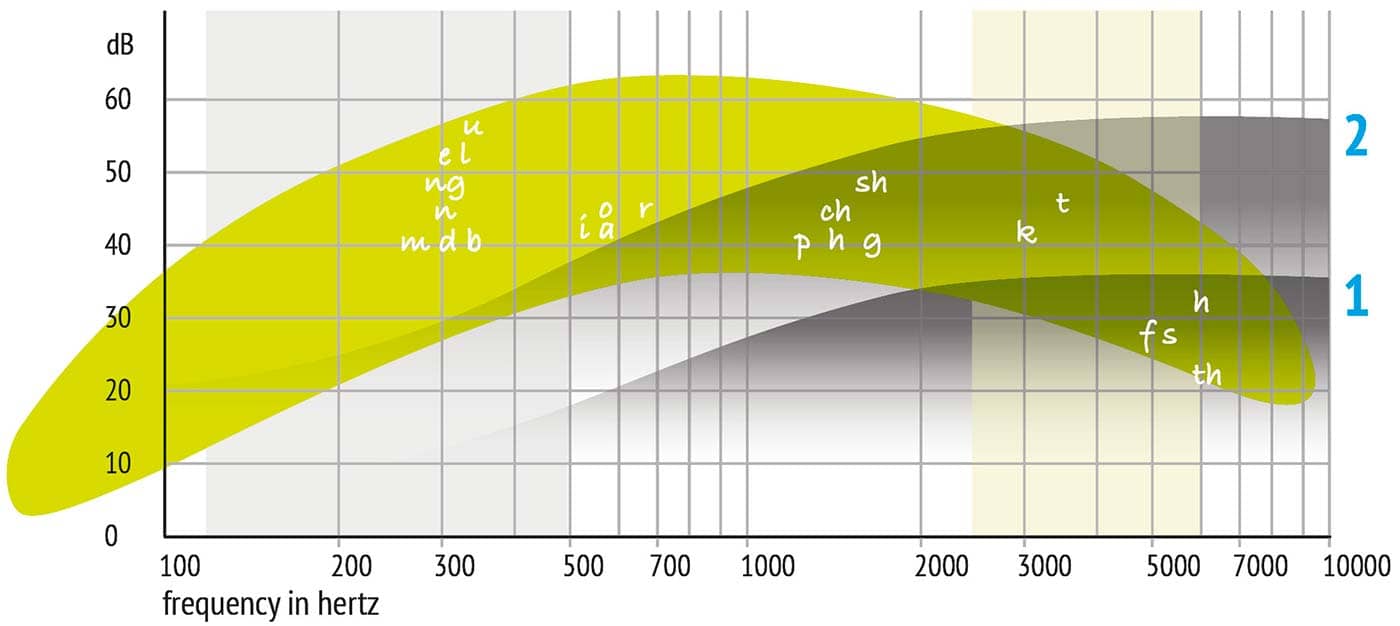
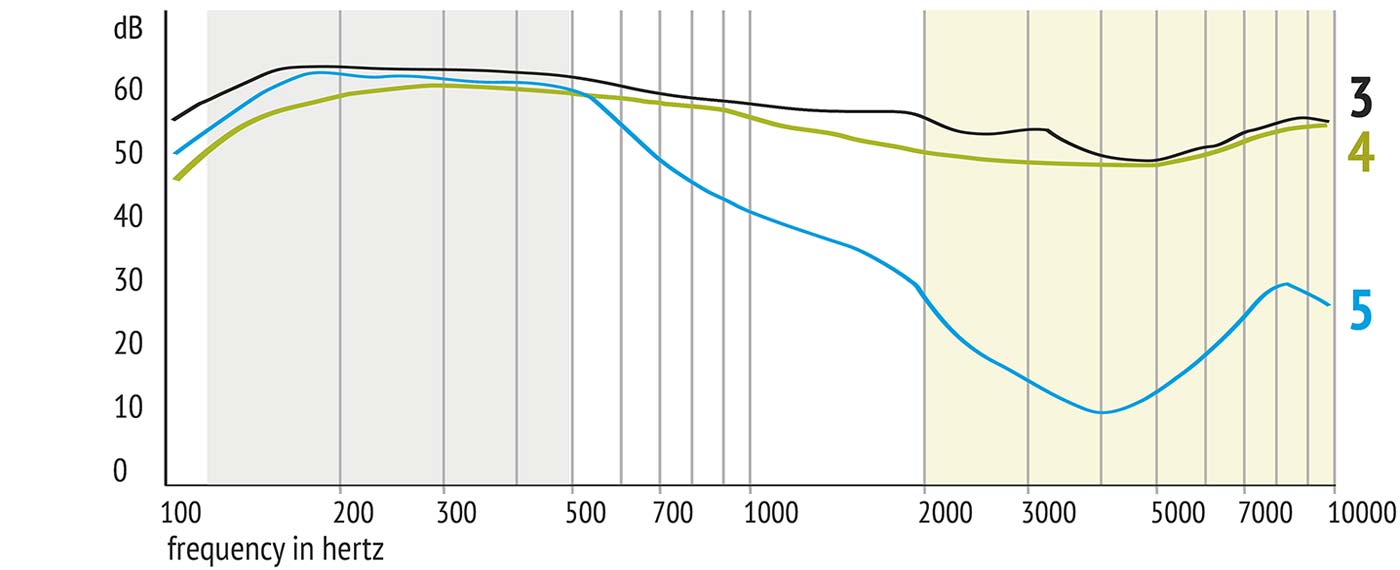
3) Original frequency of the voice
4) The Acoustic Optimizer EWA.1 hardly impairs the sound intensity (volume level) of the individual frequencies at all. Above all, the high frequencies that are so important for speech are retained in their entirety. Its effect unfolds in the corners of the room, where it effectively absorbs the low frequencies of the flutter echoes.
5) With complete, strongly dampening acoustic ceilings, the high frequencies in particular are strongly absorbed. Some consonants can no longer be understood from a distance of 3-5 meters. Depending on the design of the ceilings, the flutter echoes from the room corners cannot be prevented to a sufficient extent.
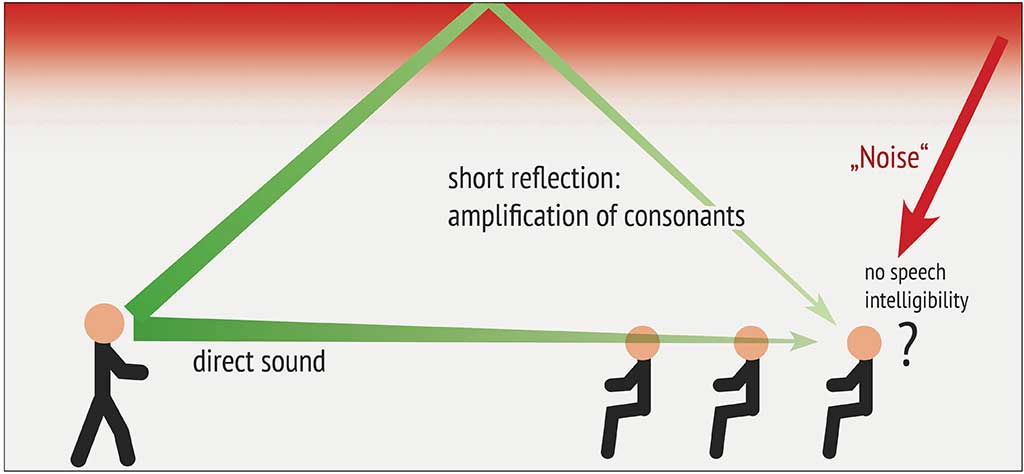
Room acoustically untreated
In acoustically untreated rooms, disturbing flutter echoes form in the boundaries and especially in the corners, causing a loud and time-delayed overlapping of the original. Room boundaries and corners act as resonators, lowering the incident frequency and amplifying the noise by 6-8 decibels. Speech intelligibility can be made considerably more difficult, as everyone involuntarily speaks louder. The ability to concentrate may decrease. Stress reactions in speakers as well as listeners can build up.
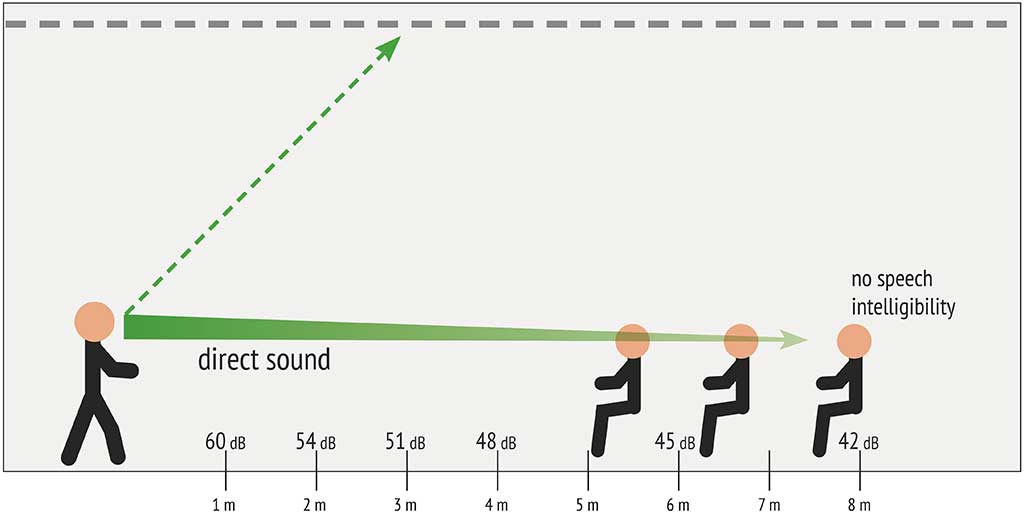
Room with complete, strongly dampening acoustic ceiling
Although complete, strongly dampening acoustic ceilings absorb reverberation, they can simultaneously hinder the helpful short reflections. Lecturers would have to speak much louder to be heard and understood throughout the room. Teachers confirm this effect. After the installation of acoustic ceilings, it is necessary to speak with a significantly louder voice in order to be understood throughout the class.
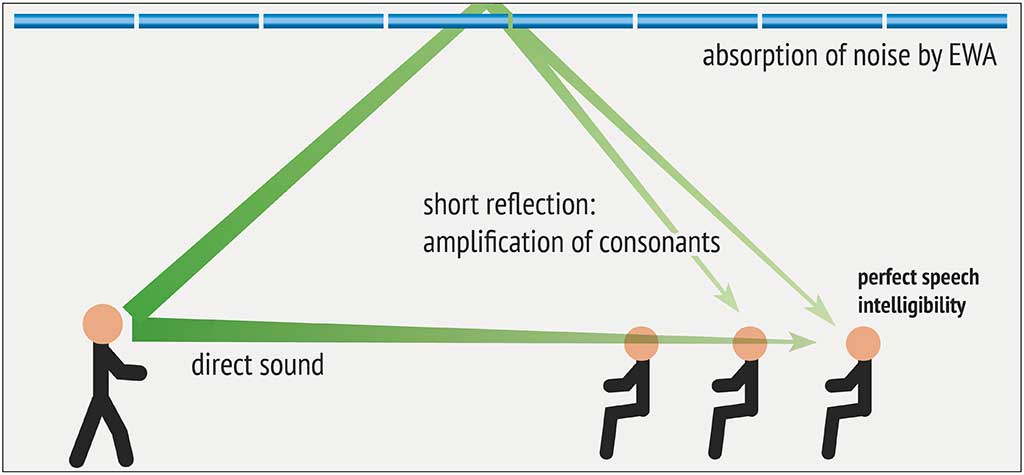
Room with Acoustic Optimizer EWA.1
The EWA.1 Acoustic Optimizer prevents the formation of flutter echoes in the corners and simultaneously maintains the short reflections from the ceiling.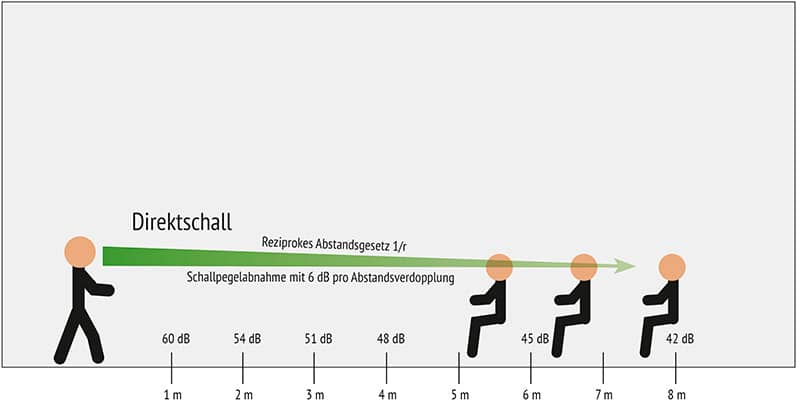
In acoustically untreated rooms, disturbing flutter echoes form in the boundaries and especially in the corners, causing a loud and time-delayed overlapping of the original. Room boundaries and corners act as resonators, lowering the incident frequency and amplifying the noise by 6-8 decibels. Speech intelligibility can be made considerably more difficult, as everyone involuntarily speaks louder. The ability to concentrate may decrease. Stress reactions in speakers as well as listeners can build up.
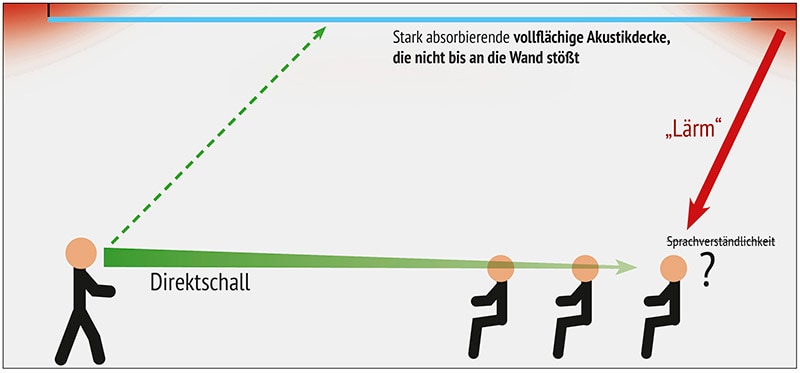
Although complete, strongly dampening acoustic ceilings absorb reverberation, they can simultaneously hinder the helpful short reflections. Lecturers would have to speak much louder to be heard and understood throughout the room. Teachers confirm this effect. After the installation of acoustic ceilings, it is necessary to speak with a significantly louder voice in order to be understood throughout the class.
Background knowledge
The following applies to rooms in which communication is required without a microphone or loudspeaker - for example in classrooms, seminar rooms or company meeting rooms.
In order to reduce construction costs, buildings were - and still are - predominantly planned and constructed at right angles and with parallel lines. In addition, sensible diffusion is usually dispensed with.
In order to subsequently achieve the extremely low reverberation values in accordance with DIN 18041:2016-03, classrooms are usually acoustically damped over a large area, mainly via the ceiling surfaces. In this context, it is often claimed that direct sound is completely sufficient for communication in the classroom. By damping the ceiling surface, however, a free-field simulation is realised: The support of direct sound, which can only be realised via ceiling reflection, is no longer necessary.
Room acoustics in DIN 18041
It states: "In order to achieve a reverberation time T adapted to the room utilisation, [...] more extensive sound-absorbing measures may be necessary. This reduces the sound pressure level at the listening location. This is a disadvantage in larger rooms with distances between speaker and listener of over 8 metres [...]" (DIN 18041:2016-03, 5.2 Volume index)
DIN 18041:2016-03 also states: "In order to achieve suitable audibility, the signal level [...] must be significantly higher, i.e. by at least 10 dB, than the total background noise level [...]." This interference sound level is specified for types of use "Speech/lecture" to "Instruction/communication included" with a maximum of 35 dB on the construction side as well as on the operating side, which is not only tolerable as a basic noise level, but which cannot be prevented at all.
Finally, DIN 18041:2016-03 specifies 60 dB as the "normal" sound pressure level at a distance of 1 m from the speaker and 66 dB as the "raised" level. But also: "Speaking for longer periods of time at [...] 66 dB is not appropriate for untrained speakers using the 'raised' speech mode." - Pupils can be regarded as inexperienced speakers; teachers, as experienced speakers, cannot be expected to use the 'raised' speaking mode across the board and permanently for physiological reasons alone, especially if the number of lessons per week is high.

